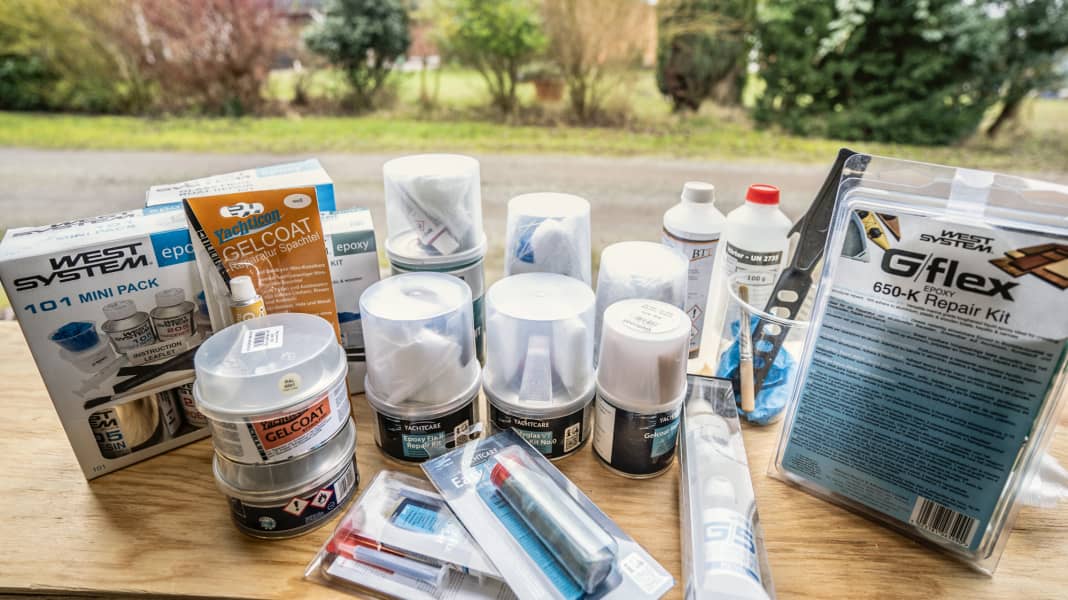
There is hardly a boating season during which you don't suffer damage or at least a scratch on your boat. After the initial annoyance, such a mishap is often put off for a long time, the timely repair is forgotten and the damage is only discovered again in the spring - sometimes even just before the boat is brought into the water. Now everything has to be done very quickly. We therefore present some practical repair kits from the boat accessories range: Many of them are epoxy-based, which makes them particularly suitable for underwater use, but of course they also work above water.
Larger damage or even a hole can be repaired with resin, hardener and glass fibre mats. The latter are often integrated into the sets, and in some cases there are even glass fibre chopped mixtures that can be added to the resin to create a stable filler. These mixtures with filler also work as adhesives, so that wood, plastic or even aluminium can also be bonded with them. We also present products made from polyester resin. They are generally easy to mix, but are not quite as suitable for underwater use and must be reworked with an epoxy product. If there is damage to gelcoat surfaces above water, gelcoat repair putties are the first choice. A note on mixing: Here we recommend working with syringes (sometimes included in the set), scaled mixing cups or even a scale.
Polyester
Is an inexpensive resin and is easy to process
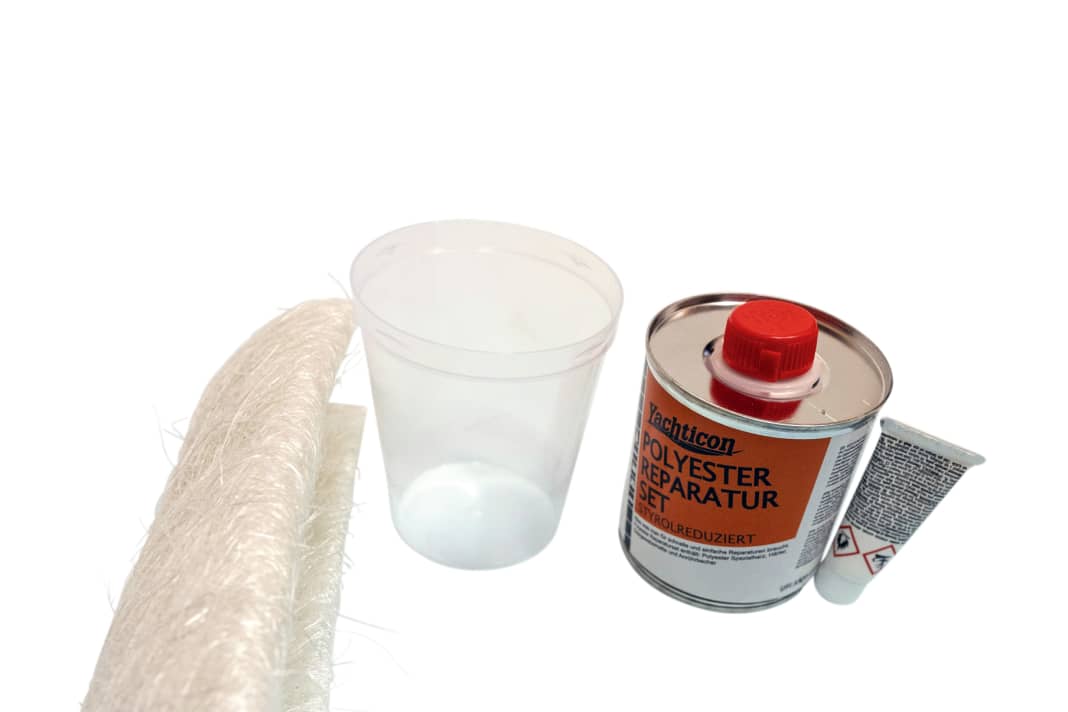



Polyester is the material used to build boats. Its advantage: it is quite cheap and easy to process. Its disadvantage: Polyester is permeable to water vapour, which means that diffusion can occur in the underwater area and water penetrates the laminate (keyword osmosis). Therefore, every plastic boat made of polyester should have a water vapour impermeable epoxy coating. Polyester can be used to quickly and safely repair holes and cracks or to construct new mooring points.
Epoxy
Just the right product for underwater areas and bonding points
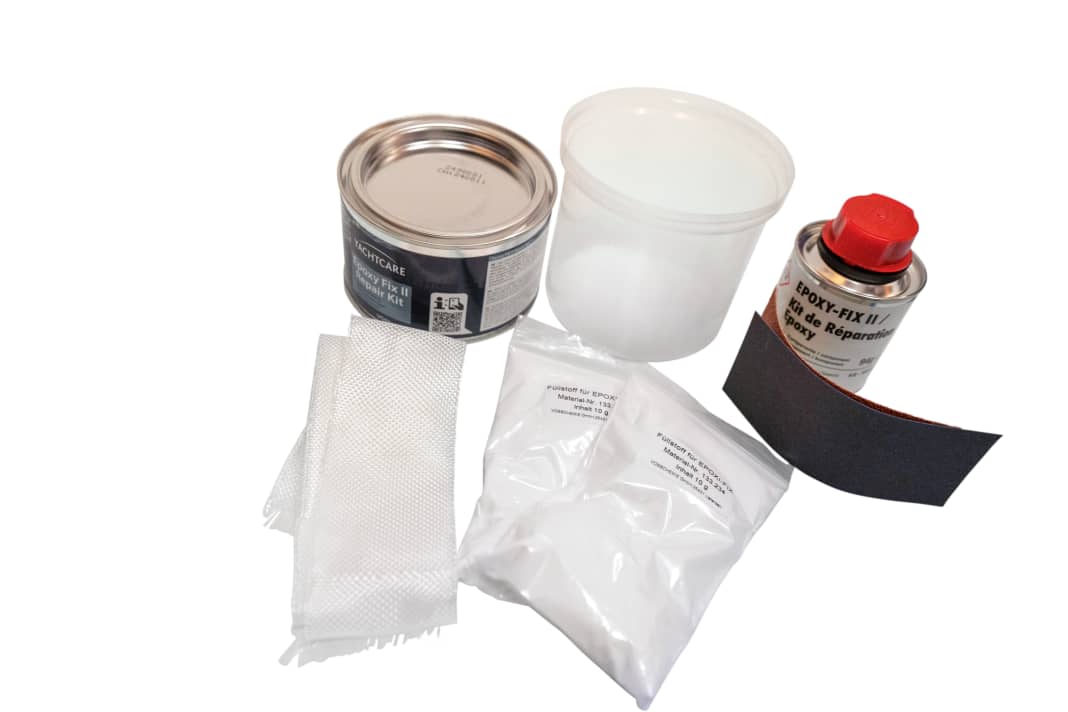





Epoxy is a high-quality resin that is impermeable to water vapour and can therefore be used well on the underwater hull. However, the specifications must be meticulously adhered to during application. These include the temperature and the exact mixing ratio. The resin should not be used at temperatures below 10 degrees Celsius. However, it is not enough to simply bring the ambient air to this temperature; the boat temperature itself must also be within this range. Drying times are also generally longer compared to polyester. With the right thickeners, epoxy can also be used as an adhesive.
Also interesting:
Gelcoat
The protective skin of the boat
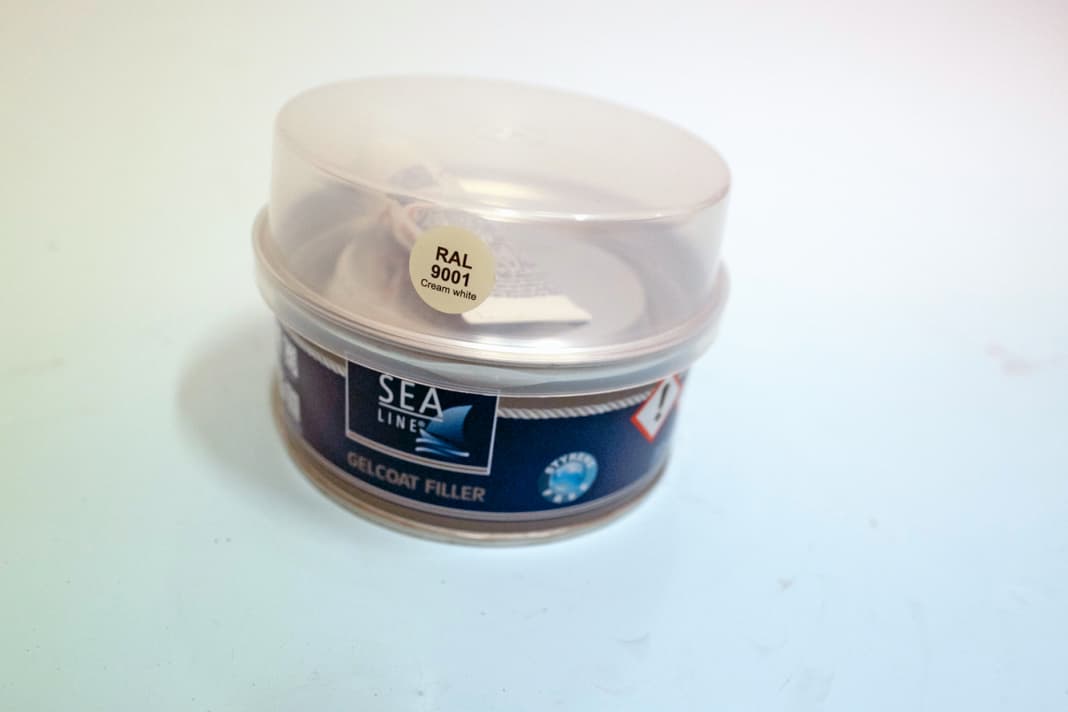




A gelcoat usually protects the laminate on the outside of a plastic boat. Gelcoat damage, whether it is chipping, scratches or hairline cracks, is sealed with a gelcoat repair filler, which is often available in different shades of white. Before sealing hairline cracks, we recommend opening them with a "Dremel" and a suitable milling head so that the material bonds well and lasts longer.
Practical helpers
There is something else
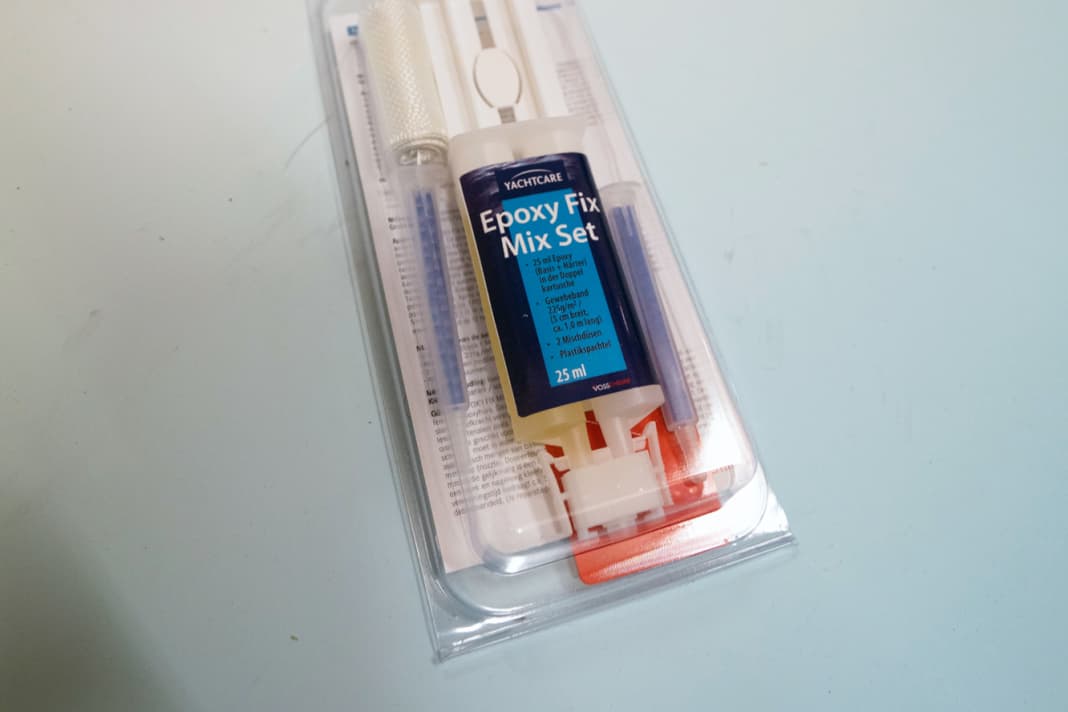



In addition to the conventional repair kits for polyester and epoxy resins, there are other practical helpers available in the accessories trade. These can often help out of a predicament and "save" the journey to the next harbour or even to the end of the season, as they are easy to use and quickly ready for use.
